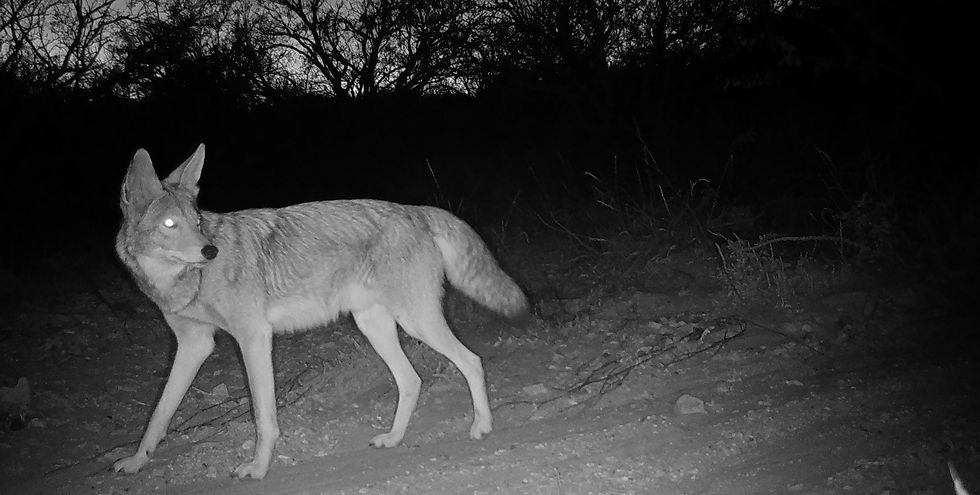Toadally New Friends
- Cholla Rose Duir
- Aug 31, 2022
- 3 min read
Updated: Nov 20, 2023
My family including three humans, two dogs, and one cat recently moved from one side of Patagonia to the other. Our new location is closer to Sonoita Creek, and there is more moisture in the surrounding environment. Even before monsoon season hit, I noticed we had some unique amphibious wildlife to admire. Residing on our porch was a canyon tree frog, Hyla arenicolor. Try as I might to relocate this little cutie to a safer location it always seemed to reappear the next day quietly letting me know it had every intention of enjoying the screened-in porch as I did. Tree frogs have the surprising ability to change colors to camouflage themselves. Until I discovered this trickery was expected, this little friend had me fooled into thinking there was more than one frog claiming our porch as its habitat.

Enjoying this little frog who decided to share her space with us felt special. Little did I know, more of her relatives would soon show themselves. The red-spotted toad, Bufo punctatus, arrived with the first couple of monsoon storms. Slightly larger than the tree frog, they dotted our driveway and hopped about the yard with their red spots making them particularly easy to identify. These charismatic and abundant toads can amazingly tolerate a 40% loss in body water and still be active during dry months, although they do hibernate underground during winter. We adapted further to accommodate this second amphibian, and the dogs who had been banished from the porch were no longer allowed off-leash in the driveway where the red toads seem happiest in the evenings.

The dogs would face one more challenge, one that could make them deathly ill, the Sonoran Desert toad, Bufo alvarius. The Sonoran Desert toad possesses skin toxins that are strong enough to kill a dog and have been known to cause sickness and hallucinogenic qualities in humans. Two of these toxic beauties live in the dog run and have a nice little burrow allowing for some pretty cool videos. Lucky for us, one of our dogs seems to instinctively know to avoid them, leaving only one dog to keep close on nighttime potty breaks. Frequently they are easy to spot, immediately outside our backdoor, eating bugs attracted by the inside lights.

Many amphibian species live a life of duality. Part of the year, they hibernate underground, part of the year they are active and above ground. I find myself living a duality around them myself. Part of the year, I do not see them, and part of the year, I do. I choose to accommodate their duality and mix up my schedule to avoid any harm coming to them. These fantastic creatures with apparent superpowers can bring wonder into our lives if we take the time to learn about them and make space for their busy times.
Borderlands Restoration Network strives to restore local watersheds, including protecting and creating habitats for frogs and toads. Amphibians face many challenges as their bodies require abundant moisture to function correctly and are particularly vulnerable to climate change. Some ways you can help our local amphibians include planting native plants and avoiding the use of pesticides that turn the bugs that frogs and toads eat into toxic food. Also, if possible, avoid driving or cycling in the summer evenings, especially during or immediately after the monsoon rain. If you have to get out there and enjoy the rain, slow down and take a walk, you might meet some toadally new friends along the way.
Important note: To reach a larger audience, I have used the well-known term hibernation to describe the rest period some amphibians enter during the year's cooler months. The proper term for amphibians and other cold-blooded animals is brumation, which is different from some mammals' hibernation process.





Comments